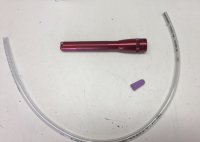Rented Mule
XS650 Enthusiast
I just completed restoring a 1978 XS650SE. I learned a lot from the project, sometimes more than I wanted, but there is one area I’m having a very difficult time with, that is finding a carburetor vacuum leak. The carburetors were professional rebuilt, new carb boots installed, and fuel tank cleaned. The engine starts and runs extremely well, however, when the engine gets hot, usually around 50 miles or stop and go traffic the RPM, will climb to 3000. To get the RPM down, I have to drag the engine down with the transmission engaged in order to get a normal 1200 RPM idle speed. These symptom I believe, are indicators of a carburetor vacuum leak of/or faulty components.
I have watched numerous YouTube videos demonstrating various methods used to find vacuum leaks. Such as, starter fluid, carb cleaners, or propane sprayed in and around engine components. All of which are extremely flammable and in my case with a hot engine, I’m sure, will ignite the vapors.
Any thoughts or ideas on which areas I should concentrate on? And, which aerosol application method would you recommend using to identify a vacuum leak on a hot engine?
I have watched numerous YouTube videos demonstrating various methods used to find vacuum leaks. Such as, starter fluid, carb cleaners, or propane sprayed in and around engine components. All of which are extremely flammable and in my case with a hot engine, I’m sure, will ignite the vapors.
Any thoughts or ideas on which areas I should concentrate on? And, which aerosol application method would you recommend using to identify a vacuum leak on a hot engine?


